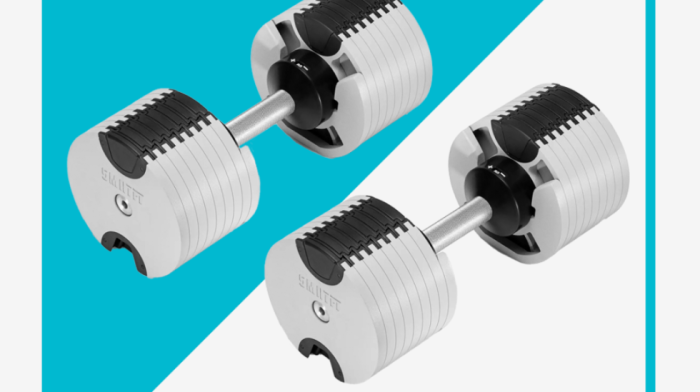Do you wonder what the best way is to count sets and reps? Why you shouldn't skip leg day? We have answers. This is #Gains, Explained, a space for you to ask any and every question about fitness. The Men's Health team (and other experts) are here for you.
To submit a question for a future column, fill out this form.
I recently had a horrible training session where nothing went right. How can I bounce back after a bad workout?
-Just One of Those Days
EVERY SO OFTEN when I’m in the gym, I’ll realize that I just don’t feel right. Sometimes it’s in the way I’m moving through my back squats, struggling to hit my typical depth no matter how low I tell myself I should be able to go. Other times I straight-up miss lifts I usually rep with ease—recently, I failed early in my bench press sets, stymied at the weight I easily pushed through the week before when my triceps just wouldn’t cooperate. On days like this, I worry too, fearing I’m doomed to regress. Are my gains really at risk?
The answer is, probably not. Bad days will happen. Thankfully, that doesn’t mean you’re doomed to lose your hard-earned PRs or that your muscles will suddenly deflate. A Sports Medicine systematic review investigating strength development and retention in athletes found that strength levels can be maintained without significant loss up to three weeks after detraining (which means a full break from regular workouts). What does this tell us? Even if you’re not on your A-game during a session, you’re probably not going to suddenly lose everything you’ve built after one (or even a few) bad days, as long as you’re consistently putting in effort.
Knowing this might help you to feel better when you’re looking at the big picture (as it should), but finding a way to reset for the workout following your bad one is important to stay motivated and consistent with your training. You need to be able to bounce back. I talked to a few experts to find out how.
Determine What Might Be Behind Your Bad Day
Bad days don’t just start when you walk onto the gym floor, so you should consider all the factors that could have contributed to your off day when you’re looking to bounce back. The old saying that you “slept on the wrong side of the bed” holds a bit more weight here than you might expect.
“Many factors contribute to sub-optimal performance, including the sleep and nutrition you had the day/night before, your overall stress levels and responsibility, and lastly, your age as an individual and as a lifter,” says Men’s Health Advisory Board member and trainer Lee Boyce.
A poor night’s sleep or a missed meal could definitely be the culprit behind your poor performance. How do you address that going forward? Simple: Get some rest and fuel up right before your next session. If you can’t control for those situations—maybe there’s a project for work cutting into your ZZZs, or you skip your breakfast in a rush to get out the door—keep these circumstances in mind as you approach your workout. You might not be physically capable of hitting 100 percent, so adjust your expectations accordingly.
One other significant factor that could play into your performance has to do with the types of workouts you’re attempting. Maybe you’re just starting out and you want to go as hard as possible. Or maybe you are experienced, but you’re still pushing yourself to train at peak capacity without the proper rest, recovery, and fueling plans in place. Either way, you’re setting yourself up for bad days if your program doesn’t match your level of preparedness. “It's easy to be overzealous with heavy lifting volume and intensity, which eventually fries the nervous system, causing it to revolt in the form of poor performance and a greater need for rest and recovery,” Boyce notes. “Instead, focusing on simple, effective programs that keep the ‘less is more’ mantra in mind is the key to being able to show up every day and crush it in the gym.”
Last year, I was training for a marathon and kept the same five-day strength training program I had in place I was doing before I added all the road mileage. My lifting numbers dropped and I felt like crap running, so I realized something had to give. Once I pulled back on the gym volume, switching to a three-day split, I felt better in the gym.
Identify What a Bad Day Means for You—and Make a Change
Bad workouts can be as much about your mental approach as any physical issues you’re having, according to Boyce. If you’re going into your training with a very limited or binary idea about what constitutes success—in other words, if your mindset is that if you miss a lift or fall short on a set, you fail—you’re not going to have a good time when even the smallest aspects of your plan don’t pan out.
“Taking an all-or-none approach to your goals, gains, or fitness is an easy way to end up disappointed at some point, and possibly derail your focus and mental health,” he says. “It's important to remember that everyone has bad days and every lifter has bad workouts.”
Your fix: identify what exactly constitutes a “bad” workout for you. Is it bad because you’re not able to do the exercises exactly as you planned, or because you’re just not feeling good in your body? I get discouraged when I can’t hit the same amount of weight I did for the same lift in the previous workout—but then I try to remember that failure is in no small degree tied to success, and is in some ways necessary for strength training progress. We won't always hit every rep of a workout. But we can learn a lot from these "failed" sets.
Learn How to Adjust
Once you've determined what is causing you to struggle, you'll need to shift your approach to avoid falling into the same negative patterns.
“Bad days are also more about perception than reality, so sometimes changing your entire approach to training can mitigate the feeling that you’re having a “bad day’” says Men’s Health fitness director Ebenezer Samuel, C.S.C.S.
He suggests shifting your strategy from working for a set number of reps to instead using the method of “reps in reserve.” This means that you perform an exercise just as you would normally, but rather than hitting an arbitrary total rep count, you stop when you feel you could only complete one or two more reps with good form. “You’ll know from your best days exactly what 2RIR (reps in reserve) on a front squat feels like, and you’re working to that level of muscular fatigue instead of a number,” Samuel says. “Some days, that might look like a set of 10 at 225. Other days, it might not.” Regardless of the number of reps you’ve performed, you know you're delivering similar effort on both good days and bad.
Boyce takes this adjustment approach a step further, noting that you can—and should—feel empowered to switch up your program when you don’t feel 100 percent. He calls this training "intuitively." If something isn't working, says Boyce, you should consider tweaking your lifting volume or load, or even changing to a different exercise.
That’s a shift that I made recently the day my triceps failed me as I was benching. I still had a lot of presses left to complete the workout—so I picked up significantly lighter dumbbells when I moved from the barbell bench to the incline press. I focused more on my tempo than pushing pure weights, so I still felt strong.
Remember: even if you don’t love every single moment of your workout, fitness is supposed to be a positive aspect of your life. If your overall approach isn’t one that prioritizes feeling good, you need to adjust. “One key to any workout strategy is that you shouldn’t ever leave the gym feeling crushed, physically or mentally,” says Samuel, citing MH Advisory Board member Don Saladino. “Always aim to leave the gym feeling successful, even on your worst days.”
Use that as your guiding principle to beat the bad days. When you start to feel like things are flying off the handle, shift your approach to get back to the good. You are in control of your experience. Once you learn to adjust to your needs, the bad days will start looking more like opportunities.


























Comments (0)